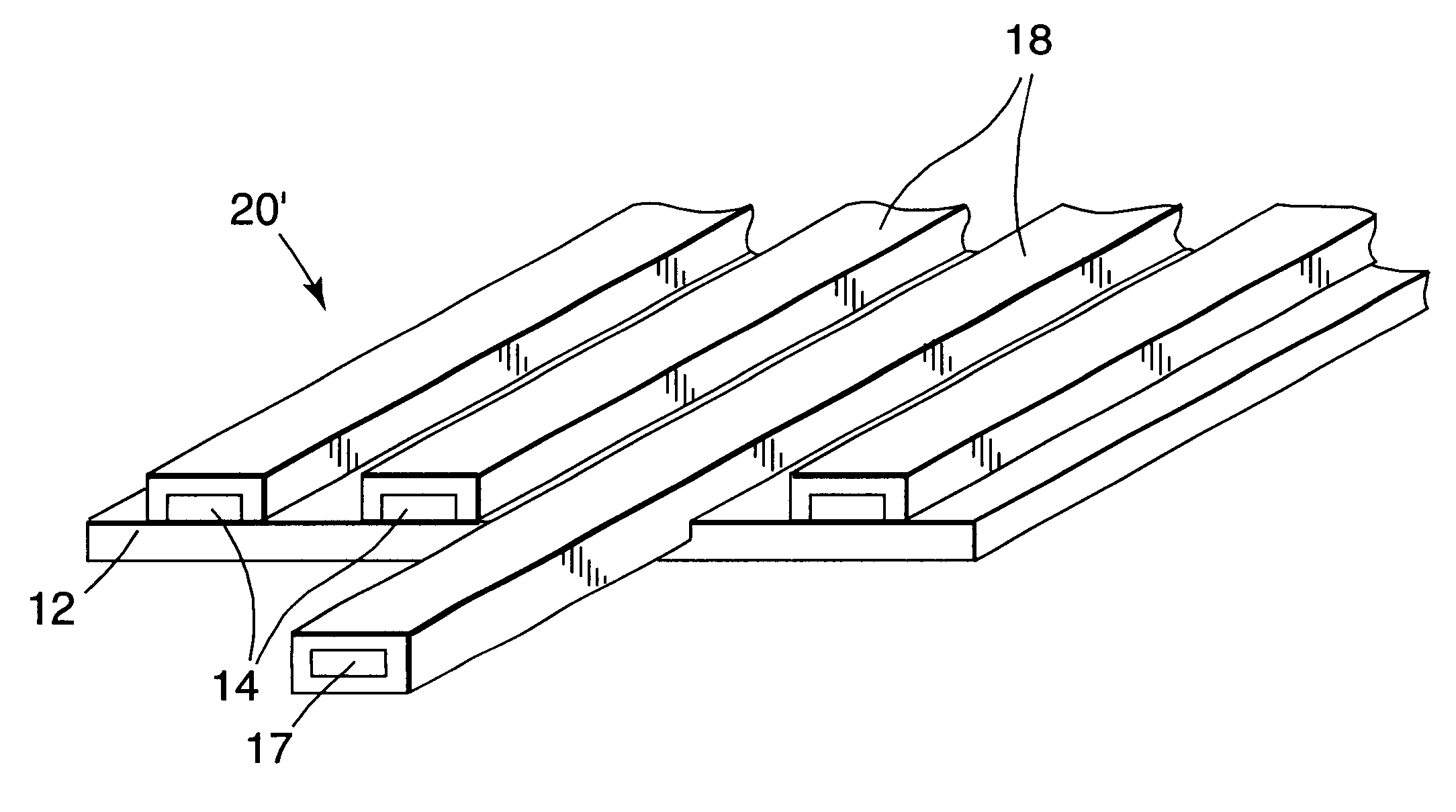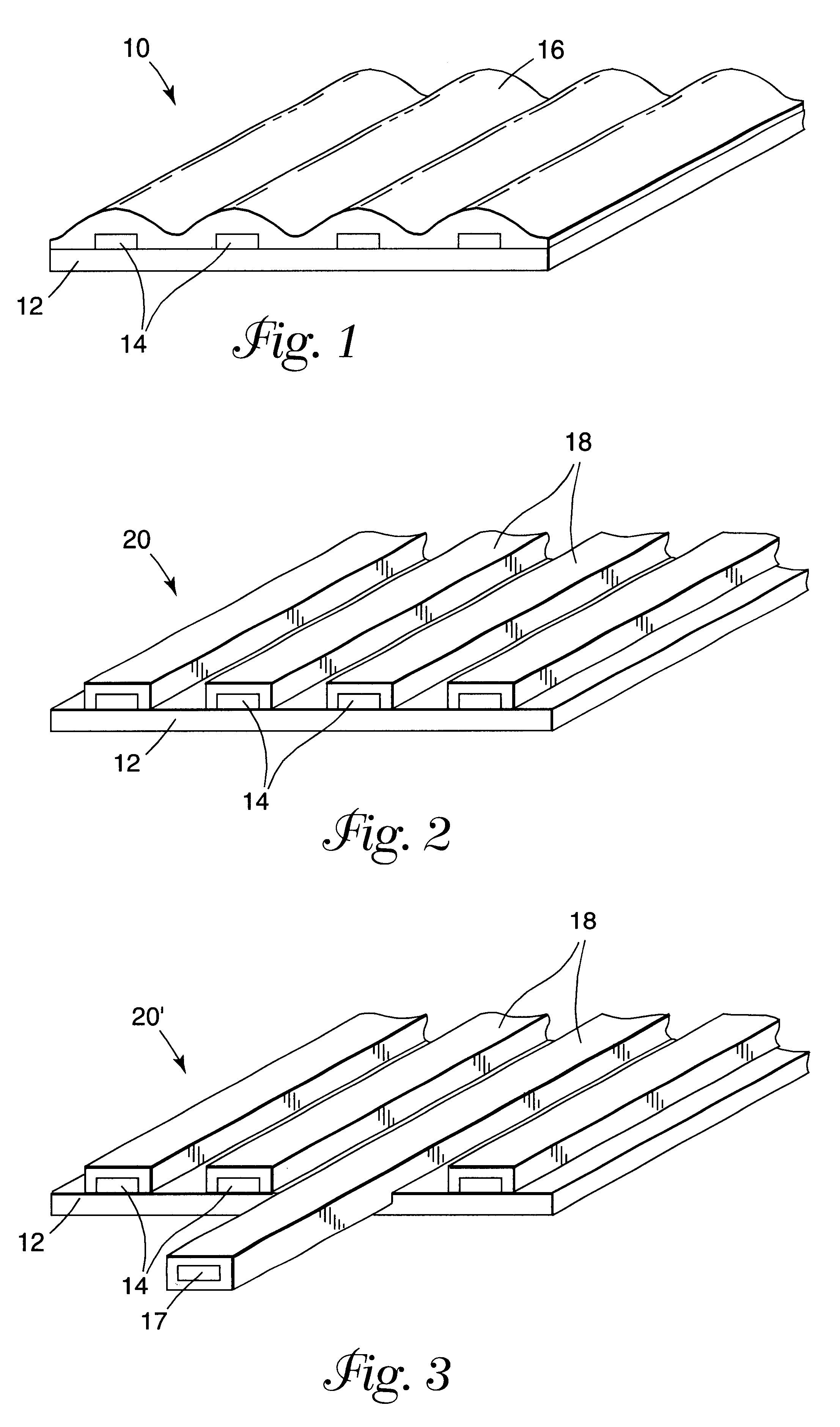Photoimageable, aqueous acid soluble polyimide polymers
a polyimide polymer, aqueous acid soluble technology, applied in the direction of electrolysis, electrophoresis, isotope separation, etc., can solve the problems of inconvenient device malfunction, complex circuit combination, and more sophisticated devices
- Summary
- Abstract
- Description
- Claims
- Application Information
AI Technical Summary
Problems solved by technology
Method used
Image
Examples
Embodiment Construction
Emulsion Preparation
A quantity of photoimageable polyimide, dissolved in 1-methyl-2-pyrrolidinone (NMP) was stirred at 1000 rpm, using a Dispermat.RTM. FE Laboratory Dissolver from VMA-GETZMANN. After dropwise addition of lactic acid and butyl cellosolve, the stirring speed was increased to 5000 rpm. Water was added dropwise to the rapidly stirring solution until the emulsion phase inverted from water in solvent to solvent in water. An additional quantity of water was added and the emulsion was kept stirring for 2-3 minutes. Finally, the fluid composition was filtered through a 1.0 .mu.m filter into a 4 oz. wide-mouth jar for storage.
Cathodic Electrophoretic Deposition of Photoimageable Coatings on Copper
Emulsion samples were placed in the reservoir of an electrochemical cell having a cathode, in the form of a copper layer on a flexible polyimide substrate, and a platinized anode separated from the cathode by a fixed distance. A Hewlett Packard, 6633A DC power supply was connected t...
PUM
| Property | Measurement | Unit |
|---|---|---|
| Fraction | aaaaa | aaaaa |
| Fraction | aaaaa | aaaaa |
| Fraction | aaaaa | aaaaa |
Abstract
Description
Claims
Application Information
 Login to View More
Login to View More - R&D
- Intellectual Property
- Life Sciences
- Materials
- Tech Scout
- Unparalleled Data Quality
- Higher Quality Content
- 60% Fewer Hallucinations
Browse by: Latest US Patents, China's latest patents, Technical Efficacy Thesaurus, Application Domain, Technology Topic, Popular Technical Reports.
© 2025 PatSnap. All rights reserved.Legal|Privacy policy|Modern Slavery Act Transparency Statement|Sitemap|About US| Contact US: help@patsnap.com


